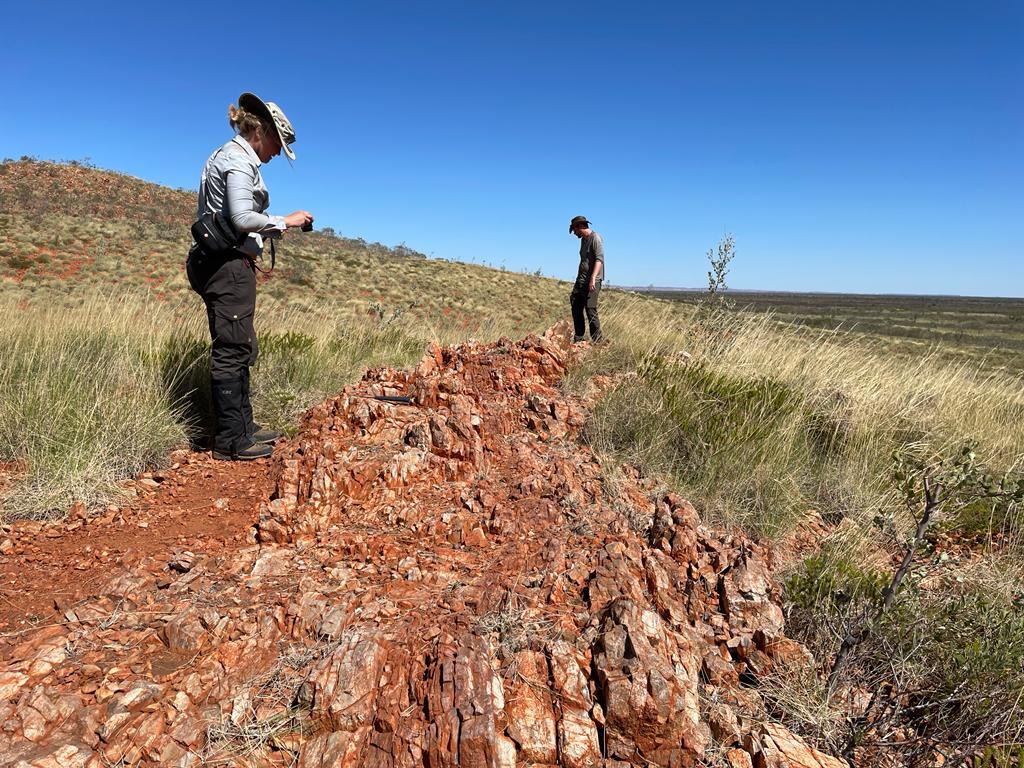The age of the Archean Cooke Bluff barite deposit in the Pilbara craton
This Master's project was designed for Enza Magnier who started her Master's program in Earth Sciences, UiB, in the fall semester 2023. The Master's project is given by the research group Geochemistry and geobiology.
Main content
Project description
Sulfate minerals are rare in the geological record prior to the oxygenation of the Earth’s atmosphere circa 2.4 billion years ago (Ga). An exception to this are a few isolated occurrences of early Archean (3.6-3.2 Ga) barite (BaSO4), hosted in volcano-sedimentary rocks in South Africa, India and Western Australia. This project focuses on one of these barite deposits in the Pilbara craton of Western Australia, at a locality called Cooke Bluff Hill. Unlike the nearby 3.49 Ga North Pole barite deposit that has been studied in great detail, the Cooke Bluff barite has only been mapped in the 1970s (Hickman, 1977) and no further geochemical data exists. A nearby volcaniclastic metasandstone was dated at 3.41 Ga (Nelson, 2002) and this age is often used for the Cooke Bluff barite deposit (e.g. Huston and Logan, 2004). However, the stratigraphy in the area is complex and mapping has placed the barite-rich units into younger (3.29-3.26 Ga) formations. If this younger age is correct, then the sediment-hosted Cooke Bluff barite would be time-equivalent to the sediment-hosted Barite Valley deposit in the Kaapvaal craton, South Africa. On the other hand, if the older age is correct then this raises the question why there are no significant stratiform barite deposits in the Pilbara craton younger than 3.4 Ga, unlike the barite record in the Kaapvaal craton.
This project aims to determine the age of the Cooke Bluff barite deposit using U-Pb geochronology on zircons from a sandstone directly underlying the barite. It will also generate multiple sulfur isotope data (δ34S, Δ33S, Δ36S) from barite samples, which will provide additional constraints on the depositional age based on previously observed temporal trends in Δ33S (Roerdink et al, 2012). In addition, Sr isotope data from the barite have already been measured and can be used as a third time-constraint, based on a recently developed seawater evolution curve for the early Archean (Roerdink et al, 2022).
Proposed course plan during the master's degree (60 ECTS):
GEOV243 (10 ECTS)
GEOV245 (10 ECTS)
GEOV252 (10 ECTS)
GEOV300 (5 ECTS)
GEOV302 (10 ECTS)
GEOV341 (5 ECTS)
GEOV342 (10 ECTS)
Field- lab- and analysis work:
Crushing of rocks and separation of zircons, imaging of zircons using electron microscopy, laser ablation ICP-MS analysis of zircons, dissolution and distillation of barite powders (Thode reduction), thin section study of a subset of samples, data interpretation of U-Pb ages, S isotopes and Sr isotopes. Potential visit to University of Munster, Germany for S isotope analyses depending on successful application of Meltzer funds.

